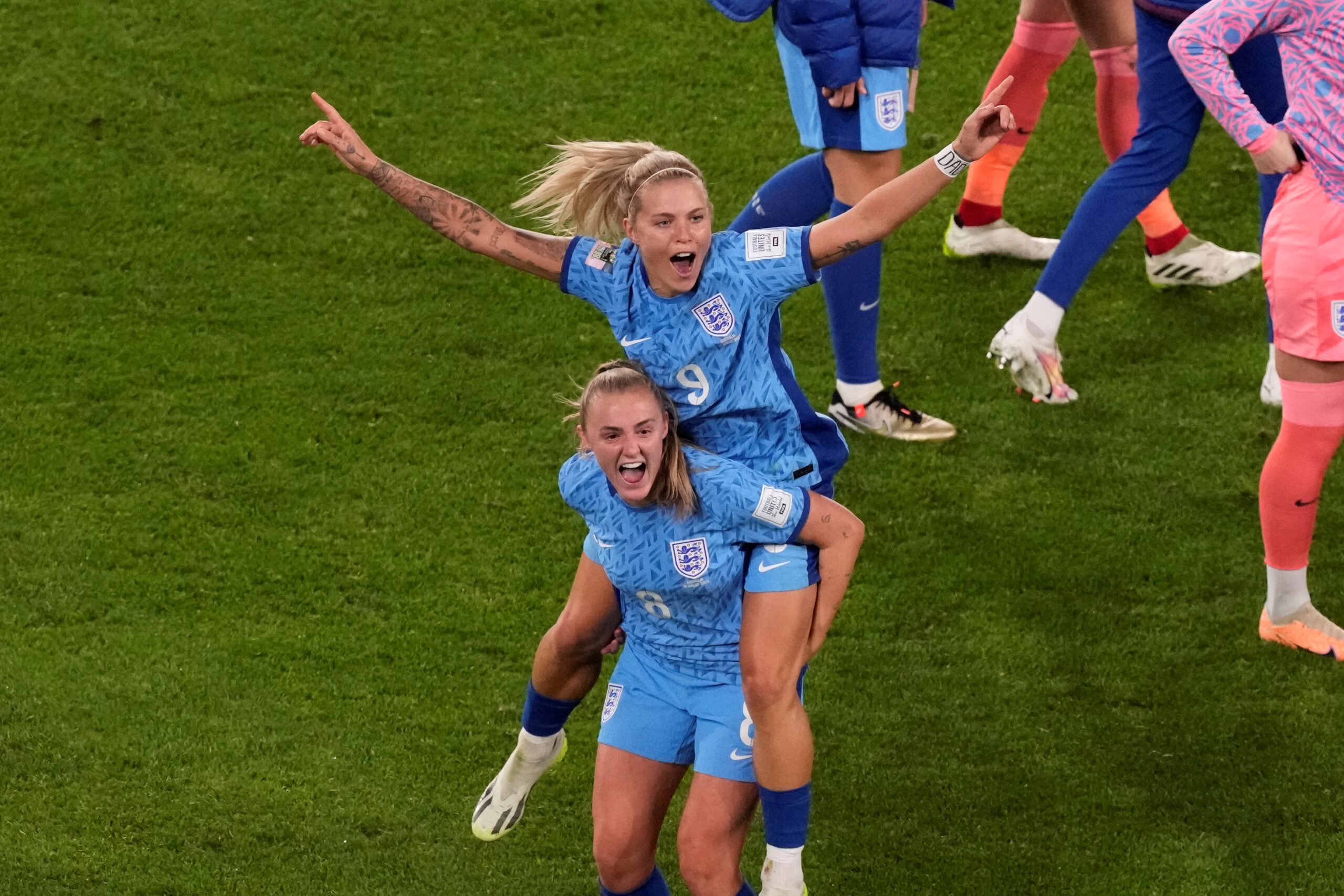Written by Izzi Rowsell, Junior Account Executive:
12 million viewers tuned into the 2023 FIFA Women’s World Cup final on August 20th, exceeding the 11.3 million who watched the men’s Wimbledon final in July. It’s certainly not bad for a sport that was banned in the UK for women until 1970.
Since the Lionesses’ 2022 Euros victory, a pivotal moment for women’s football in this country, the sport has seen an immense rise in popularity. The record-breaking TV audience for the World Cup indicates a positive change in how society values and engages with women’s sport. In the past 12 months, it has felt as though the entrenched sexism towards women’s football has shifted and people have recognised that the Lionesses are, at the end of the day, an England team.
Before the World Cup began, there were concerns that there wouldn’t be many viewers in the UK due to the tournament being in Australia. However, it seemed that the times of games affected the tournament in a positive way for those who would not ordinarily watch a Women’s World Cup. The matches did not interfere with busy social lives — by taking place during the working day, colleagues were actually able to watch the tournament together.
The growing visibility of the women’s game
Following the Lionesses’ Euros victory in July 2022, the game’s visibility has been instrumental in its growth. Being in a home tournament and winning a trophy — something that had previously eluded the country for so long — really captivated people’s attention and made them recognise that they could enjoy watching England women just as much as they did the men. Consequently, this caused an increase in club attendances and a huge growth in the fan base, and subsequently, the World Cup became a much bigger deal.
Visibility of the women’s game had also been championed by some clubs prior to the Euros, such as Arsenal. In May 2022, the club made the forward-thinking decision to let the Lionesses play at least six games at the club’s 60,000-capacity Emirates Stadium during the 2022–23 season, regardless of how well they performed in the Euros. This raised a significant number of eyebrows, but fast forward a year to May 2023 and the Arsenal Women’s team played Wolfsburg in the second leg of the Champions League semi-final in front of a sold-out Emirates.
Media coverage is increasing
Media coverage has a prominent impact on the visibility of sport, and historically the women’s game has lagged behind that of the men’s. When seven national and regional newspapers were examined in 2006, it was discovered that just 5.2% of all articles were exclusively on women’s sports and that the average amount of space allotted to women’s and girls’ sports was a mere 4.8%. A study by Durham University comparing the 2015 and 2019 FIFA Women’s World Cups revealed that there was a six-fold rise in the number of articles in English print newspapers, with the number of front pages rising from seven to 22 in 2019. Additionally, The Telegraph was one of the first UK outlets to launch a dedicated women’s sport section in 2019, with many other outlets shortly following suit.
Hurdles remain
In terms of televised coverage, an agreement to broadcast the 2023 Women’s World Cup was only achieved five weeks before the tournament kicked off, after broadcasters finally reached a compromise deal with FIFA. For the first time, FIFA invited bids to broadcast the tournament, and threatened to veto television coverage due to exceptionally low bids compared to the men’s tournaments. It is unlikely that this issue would affect the men’s game.
In 2021, a significant multi-million-pound agreement with Sky Sports and the BBC for broadcast rights to the WSL for three seasons was announced by the FA, making it the largest broadcast agreement of any professional women’s football league in the world. Of course, this is encouraging, but it also brings to light one of the key discrepancies between men’s and women’s football in the UK: the hindered growth of the game for lower leagues.
While men’s League One matches are broadcast on Sky Sports throughout the season, games for the women’s Championship are not even televised and can only be viewed through the FA Player. Therefore, more work is required to level the playing field in terms of visibility to reflect the development of the women’s game.
Investment in women’s football
The success of the Lionesses has not only been recognised by the public, but particularly sponsors, who are increasingly perceiving female athletes as a marketable product. FIFA’s first-ever dedicated Women’s World Cup partnership programme sold out this year with a strong-line of brands from across the globe. This plan was said to have increased by over 100% since the 2019 Women’s World Cup with 12 partners then to 30 this year.
Yet despite having more sponsors than ever, there was still a $1.4 billion dollar corporate sponsorship hole in the women’s game in comparison to the men’s.Major sponsors must assume responsibility for recognising the way their investment is broken down and who it goes to. It’s all very well getting behind the World Cup, such as Nike designing a pair of boots saying ‘Like a Lioness’ on them, but they need to do more to consider where their money is going as it should be 50/50.
More money is needed throughout the pyramid
It’s easy to forget that funding remains a huge issue in women’s football as the Lionesses’ triumphs can make it seem a more glamorous affair than it is in reality. It is vital for the game’s success that investments benefit those from the top, right down to the bottom at a grassroots level, with the aim of offering anybody a chance to participate in football, wherever they are from. As ex-Lioness Karen Carney stated, the success of the England women’s team is “built on sand” due to a lack of funding further down the pyramid.
For women’s football to continue moving in the right direction, it needs more support from the bottom. Players in the Championship are still making £5,000 a year and working three or four jobs to be able to keep playing. As Carney’s Review of Women’s Football demonstrated, the facilities are still insufficient, female players are still treated like second-class citizens, and the standards are much below the minimum. Additionally, there is a huge academy deficit with £88m spent on the boys in comparison to just £3.25m for the girls.
None of the Lionesses would be where they are today without the formative years spent with their hometown, grassroots clubs. It is essential that these sorts of clubs are funded and that we are investing in and nurturing pathways, ensuring a sustainable future for the game.
Being a women’s football fan today
Being a women’s football fan has undoubtedly changed in recent years — most notably in the last 12 to 18 months. The game is unquestionably receiving greater consideration, validation, and acknowledgement. Additionally, this has made it more enjoyable because the fan base has diversified and increased. On a smaller scale, the game’s growing popularity has led to more coverage and material about women’s football, improved access to games, news, interviews, and analyses, and an improvement in the fan experience. The BBC Sport app only started showing WSL line-ups last season!
Of course, it is fantastic that more people are watching women’s football and ‘seeing’ it for what it is, but there is still a long way to go. It is not enough to just support the Lionesses and get behind big tournaments. If you want to see growth of the game, fans need to invest in it, emotionally and financially, on a more local, day-to-day scale, and contribute to creating the infrastructure for those who want to play.






